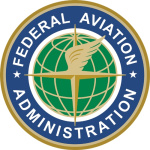- Industry: Government
- Number of terms: 35337
- Number of blossaries: 0
- Company Profile:
The stalling speed or the minimum steady flight speed obtained in aspecified configuration. For most airplanes, this is the power-off stall speed at the maximum takeoff weight in the clean configuration (gear up, if retractable, and flaps up). The lower limit of the green arc.
Industry:Aviation
A series of predetermined manoeuvres for the orderly transfer of an aircraft under IFR from the beginning of the initial approach to a landing or to a point from which a landing may be made visually.
Industry:Aviation
At sea level, the standard atmosphere consists of a barometric pressure of 29.92 inches of mercury ("Hg) or 1013.2 millibars, and a temperature of 15 °C (59 °F). Pressure and temperature normally decrease as altitude increases. The standard lapse rate in the lower atmosphere for each 1,000 feet of altitude is approximately 1 "Hg and 2 °C (3.5 °F). For example, the standard pressure and temperature at 3,000 feet mean sea level (MSL) are 26.92 "Hg (29.92 "Hg – 3 "Hg) and 9 °C (15 °C – 6 °C).
Industry:Aviation
A differential pressure gauge that measures the dynamic pressure of the air through which the aircraft is flying. Displays the craft’s airspeed, typically in knots, to the pilot.
Industry:Aviation
Rules and regulations established by the Federal Aviation Administration to govern flight under conditions in which flight by outside visual reference is not safe. IFR flight depends upon flying by reference to instruments in the flight deck, and navigation is accomplished by reference to electronic signals.
Industry:Aviation
This weight consists of the airframe, engines, and all items of operating equipment that have fixed locations and are permanently installed in the airplane including fixed ballast, hydraulic fluid, unusable fuel, and full engine oil.
Industry:Aviation
An airway is based on a centerline that extends from one navigation aid or intersection to another navigation aid (or through several navigation aids or intersections); used to establish a known route for en route procedures between terminal areas.
Industry:Aviation
An electronic system that provides both horizontal and vertical guidance to a specific runway, used to execute a precision instrument approach procedure.
Industry:Aviation
A holding pattern in which all turns are made to the right.
Industry:Aviation
